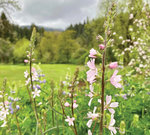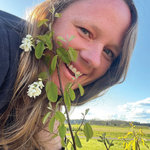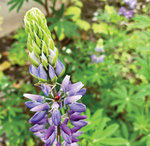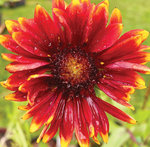



The Pacific Northwest certainly doesn’t have a shortage of foliage with its plentiful supply of rain and mild temperatures.
It’s agreeable to many types of plants, but the latest class by NatureScaping will show people how to utilize native species in their projects.
“Native plants have had hundreds of thousands of years to adapt to the climate, the soil and the wildlife in the area,” said class instructor Hannah Schrager, who is the owner of Good Year Farms.
Those who want to utilize native plants from the Pacific Northwest can attend the introductory course from 10 a.m. to noon on Saturday, Dec. 17. It will focus on marrying aesthetics and ecology.
“The class will explain what native plants are and how we can use them in our own spaces,” Schrager said.
She explained the plants are good for the environment since they typically use less water and require less fertilizer or pesticides.
“Native plants are better for wildlife and better for pollinators,” Schrager said. “People are aware that bees are struggling and putting plants out meant for these bees to be eating is good for their population.”
A diversity of native plants in one location leads to a variety of wildlife that is drawn to the area, which includes birds, pollinators and other animals.
Class attendees will learn how to select the appropriate plant for the right spot and will glean information on which ones will grow best in their yard, while producing the look and vibe a person wants.
Schrager grew up in Camas, where she spent many hours playing in the woods as a kid. She went to school for environmental science and forestry and now operates the Clark College Native Plant Center as well as Good Year Farms.
“During COVID, we held a fundraiser at the native plant center to raise money for the school and realized there is a big interest in this type of landscaping,” Schrager said.
Schrager said national parks have large conservation areas that highlight a lot of native plant life. People can create a similar, but smaller, version in their backyards if they utilize species from the area.
“If everyone’s backyard had native plants, it would be a bigger area than all of the national parks combined and we would all be contributing to conservation,” Schrager said.
The Pacific Northwest has a plethora of native ferns, evergreen trees, and types of irises, as well as yarrow and blanket flowers. The Camas flower is also original to the Pacific Northwest and Native Americans used to eat it as a food source.
The two-hour class on Dec. 17 will be located at the CASEE Center, Building B, Room 205 at 11104 NE 149th St. in Brush Prairie. NatureScaping members can attend the class for free while non-members have to pay $15. People can sign up for an annual NatureScaping membership for $25, while senior citizens pay $15.
To register for the class, email info@naturescaping.org or marlene52ns@gmail.com. Those who are interested in the class can also call 360-737-1160. For more information or to sign up for a membership, go online to naturescaping.org.